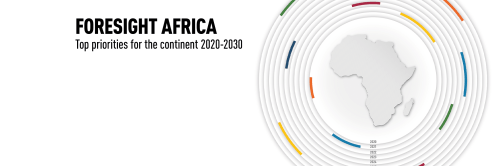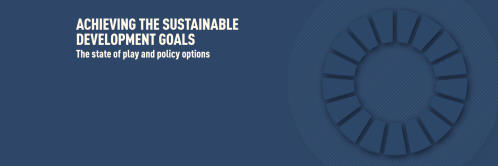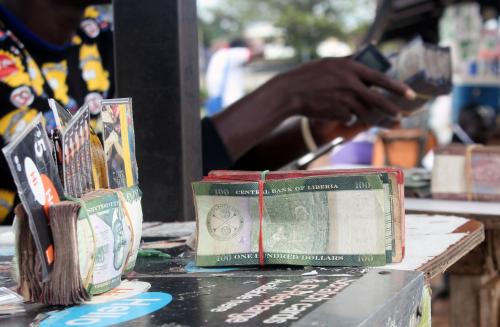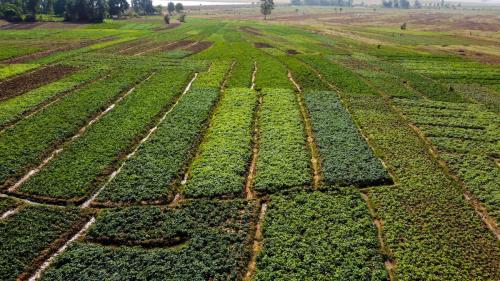Below is a Viewpoint from Chapter 1 of the Foresight Africa 2020 report, which explores six overarching themes that provide opportunities for Africa to overcome its obstacles and spur inclusive growth. Read the full chapter on achieving the Sustainable Development Goals.
The Sustainable Development Goals (SDGs) are the most ambitious and comprehensive global development agenda in history. They succeeded the Millennium Development Goals, whose implementation was rather uneven.
For the SDGs to succeed in Africa, leaders must remember that the continent’s context matters. The SDGs were adopted in 2015 at a moment when African economies were slowing down, mainly due to commodity price shocks that particularly affected resource-dependent countries. At the same time, a number of African countries are fragile due to insecurity and instability and must thus spend a disproportionate share of their resources on security—to the detriment of social and investment spending. At the global level, rising trade tensions are projected to negatively impact global growth and investment, and Africa will not be immune.
Despite this difficult environment, Africa has the potential to achieve most of the SDGs if proper strategies are adopted and implemented. Here in Rwanda, we have made progress on many of the goals, especially around poverty reduction, education, health, and access to basic infrastructure (see Figures 1.3).
Although there is no one-size-fits-all formula, African countries do share some common features and advancing on the following priorities could help the African continent achieve the SDGs.
First, national ownership and domestication of the SDGs: The SDGs should not be treated as a stand-alone project from New York. They should be fully owned by countries and integrated in national plans and strategies, domesticated and adapted to the national context. In the case of Rwanda, this approach helped achieve many Millennium Development Goals by 2015, and it underlies our strategy for the SDGs. Indeed, the SDGs have been integrated into the National Strategy for Transformation 2017-2024 and Vision 2050 in order to ease planning prioritization, resource allocation, and monitoring of progress.
The SDGs should not be treated as a stand-alone project from New York. They should be fully owned by countries and integrated in national plans and strategies, domesticated and adapted to the national context.
Second, strengthening statistical capacity and monitoring: Countries need to strengthen their statistical capacity to measure SDG indicators. They also need to build a robust monitoring system that continuously evaluates and monitors progress so that policymakers are informed in real time about any challenges that require intervention.
Third, increasing implementation capacity: We’ve found that this recommendation seems to be the most critical area for improvement. It requires institutional capacity (both systems and human resources), proper planning, transparency and accountability in implementation, and attention to anti-corruption measures. Without tackling the issue of governance in Africa, it would be impossible to expect significant achievement of the SDGs.
Fourth, resource mobilization and ease of doing business: SDG financing is a serious challenge. None of the commitments made under the Addis Ababa Action Agenda has been met so far. Domestic resource mobilization is still low, and the commitment of developed countries to allocate 0.7 percent of GNI to official development assistance has not been met. African countries need to make policy reforms aimed at improving the investment climate to attract private investment, reform their tax systems to increase domestic revenues, and adopt measures to reduce tax evasion and illicit financial flows. In the case of Rwanda, improvement of the business environment over the past 10 years has paid off: Rwanda’s ranking in the World Bank’s Doing Business index has risen from 150th in 2008 to 29th in 2018, and this has contributed to the increase of private investment, particularly foreign direct investment. Indeed, total private investment in Rwanda increased threefold between 2009 and 2018, and FDI increased nearly fourfold.
Fifth, human capital development and job creation: Africa has the youngest and fastest-growing population in the world. Over 40 percent of the population is under age 15 and 20 percent is between 15 and 24, presenting the potential for a demographic dividend. However, to realize those gains, there is a need for firm commitment from African governments to invest more in people by increasing access to quality health and education services. A more educated, healthier, and productive population will only increase the chances of SDG success.
Sixth, implementation of the African Continental Free Trade Agreement (AfCFTA): Though at first seemingly unrelated, the recently concluded AfCFTA presents an outstanding opportunity for accelerated progress on the SDGs, as expanded intra-African trade, investment, and job creation will lead to greater economic and social development overall. While trading under the AfCFTA will commence in July 2020, the agreement’s promise will only be fulfilled if African governments work together to accelerate the pace of its implementation.
Implementation of the SDGs in Africa is possible, despite the challenging national, regional, and global contexts. What matters most is the resolve and commitment of Africa’s governments, with the support of our private sector.
The Brookings Institution is committed to quality, independence, and impact.
We are supported by a diverse array of funders. In line with our values and policies, each Brookings publication represents the sole views of its author(s).









Commentary
Strategies for delivering on the Sustainable Development Goals: Some lessons from Rwanda
January 20, 2020